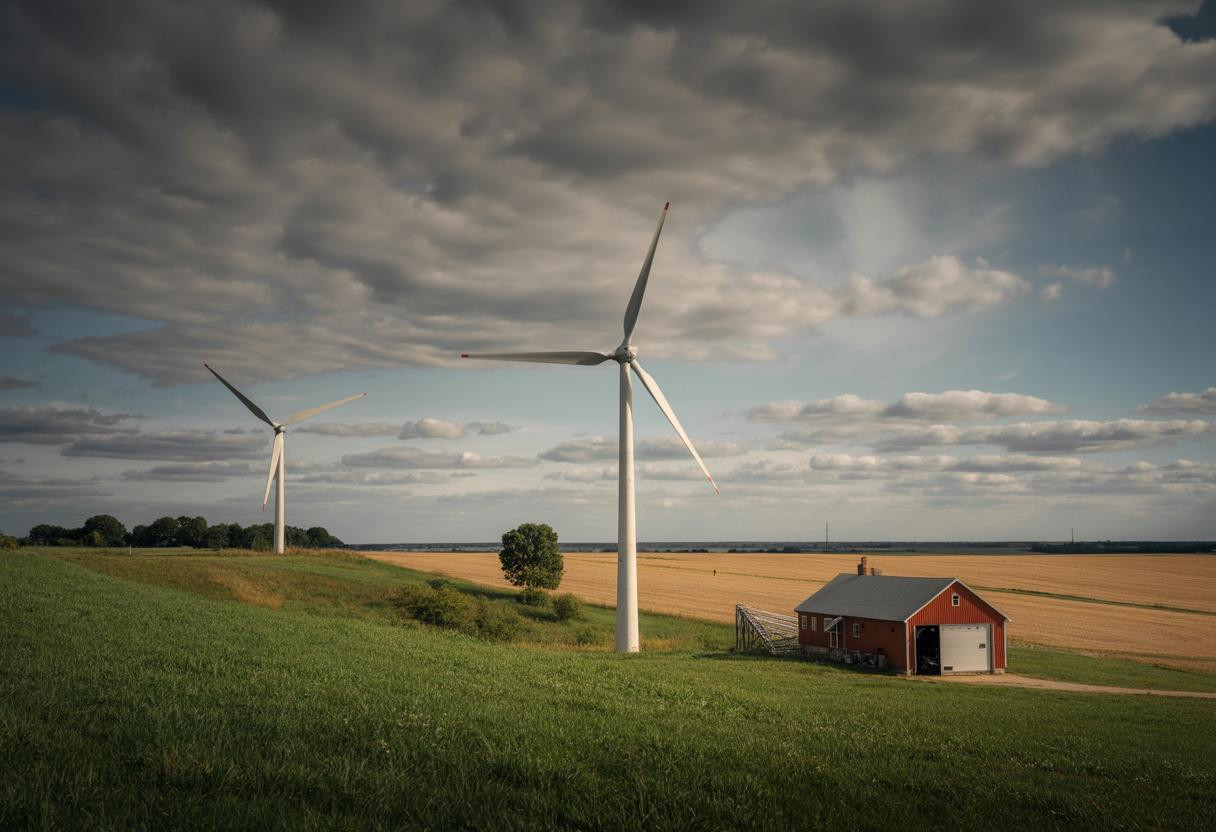This rural Minnesota county has quietly generated over $19 million in wind energy revenue since 2004, transforming how local communities fund infrastructure and reduce property taxes. Mower County’s wind energy success story reveals surprising economic opportunities that strategic long-term planning can unlock for rural America, delivering an average of $50 per resident annually in direct economic benefits.
The hidden economics of rural wind energy
Wind energy has become an unexpected economic lifeline for rural counties across Minnesota. Since 2007, Mower County has collected over $14.8 million in production tax revenue, with annual payments averaging $2 million in recent years. This revenue stream has fundamentally changed how the county funds public services and infrastructure projects.
The numbers tell a compelling story: with approximately 40,000 residents, Mower County’s wind revenue translates to $475 per person since the program began. Unlike traditional economic development strategies, wind energy requires minimal ongoing county investment while generating consistent, long-term revenue streams.
What makes this particularly noteworthy is that Mower County ranks second statewide in wind revenue despite having fewer turbines than Lincoln County. This efficiency suggests that strategic placement and modern technology matter more than sheer volume when maximizing economic returns.
Three surprising discoveries about wind energy economics
Property tax relief reaches every household
The most immediate benefit isn’t flashy infrastructure projects—it’s direct property tax relief. Mower County’s $2 million annual wind revenue can theoretically offset taxes for approximately 4,000 households at $500 per household. This creates a tangible, yearly benefit that residents see in their tax bills, making wind energy’s economic impact personally relevant.
Unlike economic development initiatives that benefit select businesses or neighborhoods, wind tax revenue creates universal economic relief that touches every property owner in the county.
Infrastructure improvements happen without debt
Traditional infrastructure projects require bonds, loans, or special assessments that burden taxpayers for decades. Wind revenue allows counties to fund road improvements, government facility upgrades, and community projects with cash-on-hand financing. This approach eliminates interest payments and reduces long-term financial obligations.
The Grand Meadow Wind Farm repowering project exemplifies this advantage, generating an estimated $475,000 annually in additional tax revenue while extending the facility’s operational life by decades.
Rural economic stability increases dramatically
Wind energy creates economic diversification that traditional rural economies often lack. While agricultural income fluctuates with weather, commodity prices, and market conditions, wind production tax revenue provides predictable, weather-independent income that stabilizes county budgets and long-term planning capabilities.
Implementing wind energy strategies in your region
The success of Mower County’s wind energy program stems from three critical factors that other rural communities can replicate. First, favorable wind resources are non-negotiable—regions need consistent, high-quality wind corridors to generate meaningful revenue. Second, supportive state policies like Minnesota’s production tax structure create the financial incentives that make projects economically viable.
However, the most overlooked factor is equitable revenue distribution. Counties that prioritize community-wide benefits over concentrated advantages see greater public support and sustainable long-term success. This mirrors how individualized approaches often outperform one-size-fits-all solutions in other contexts.
Critical planning considerations for long-term success
Address technology evolution proactively
Modern wind projects integrate with smart grid systems and advanced data collection, creating opportunities for enhanced efficiency and revenue generation. Counties should plan for technological upgrades that extend project lifespans and increase tax revenue over time.
Prepare for end-of-life planning
Wind turbines typically operate for 20-30 years before requiring major overhauls or replacement. Counties must establish decommissioning funds and repowering agreements during initial negotiations to avoid future financial burdens when projects reach end-of-life status.
Diversify renewable energy portfolios
Successful counties pair wind energy with solar projects and energy storage systems to reduce dependency on single revenue sources. This diversification strategy protects against technology changes and market fluctuations while maximizing available land use opportunities.
The replicable model for rural economic transformation
Mower County’s wind energy success demonstrates that rural communities can generate substantial economic benefits without sacrificing agricultural productivity or community character. The key lies in strategic planning, equitable benefit distribution, and long-term thinking that prioritizes sustainable revenue streams over short-term gains. For rural America facing economic challenges, wind energy offers a proven pathway to financial stability and community investment that deserves serious consideration.
